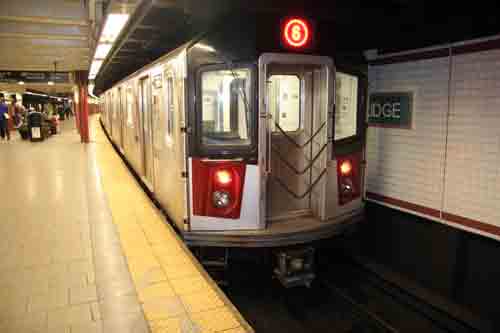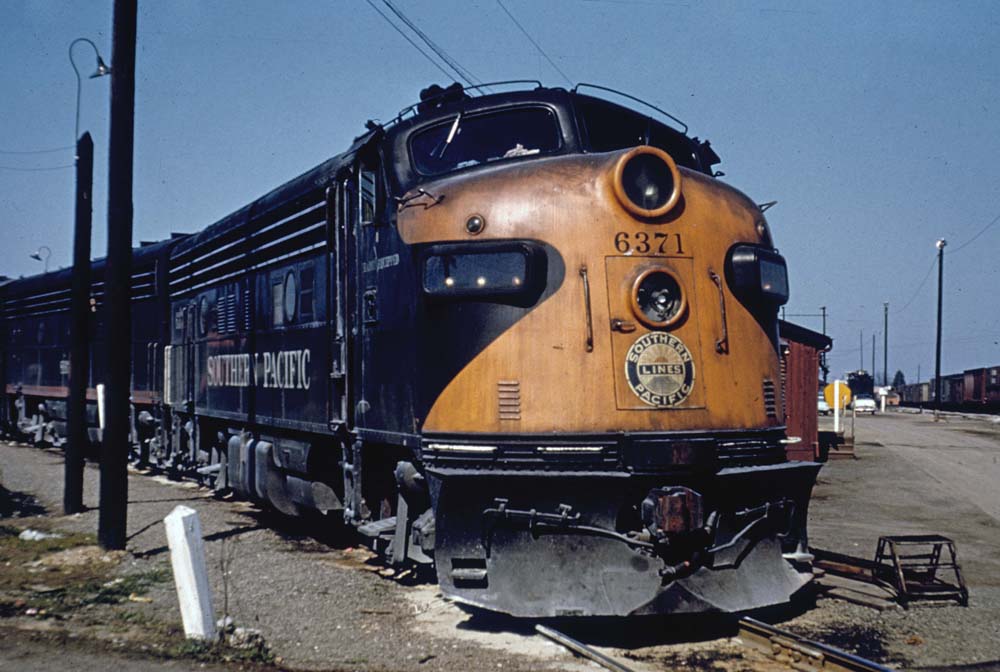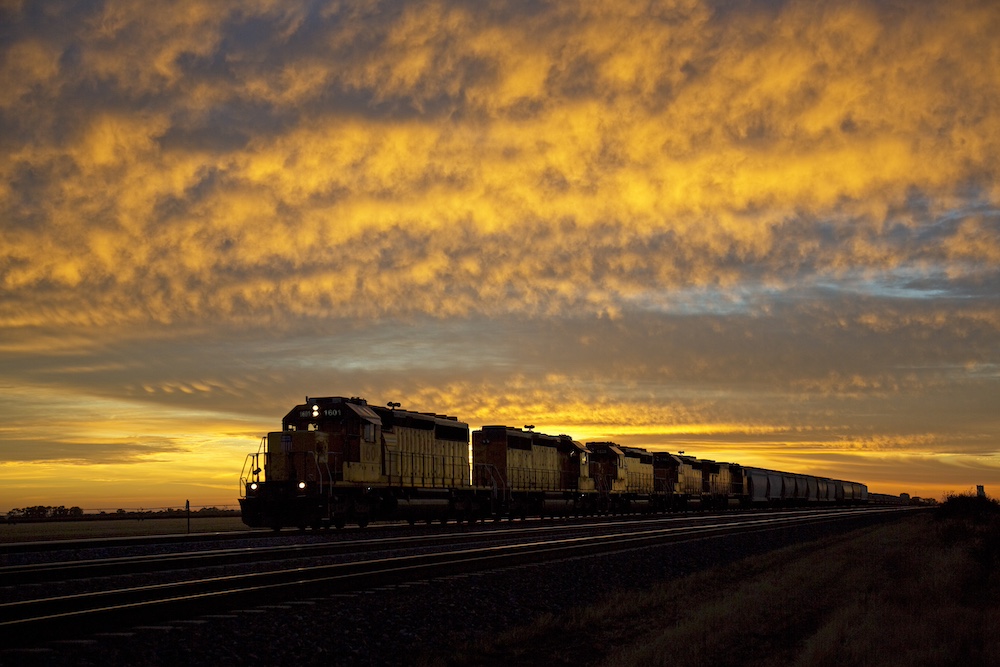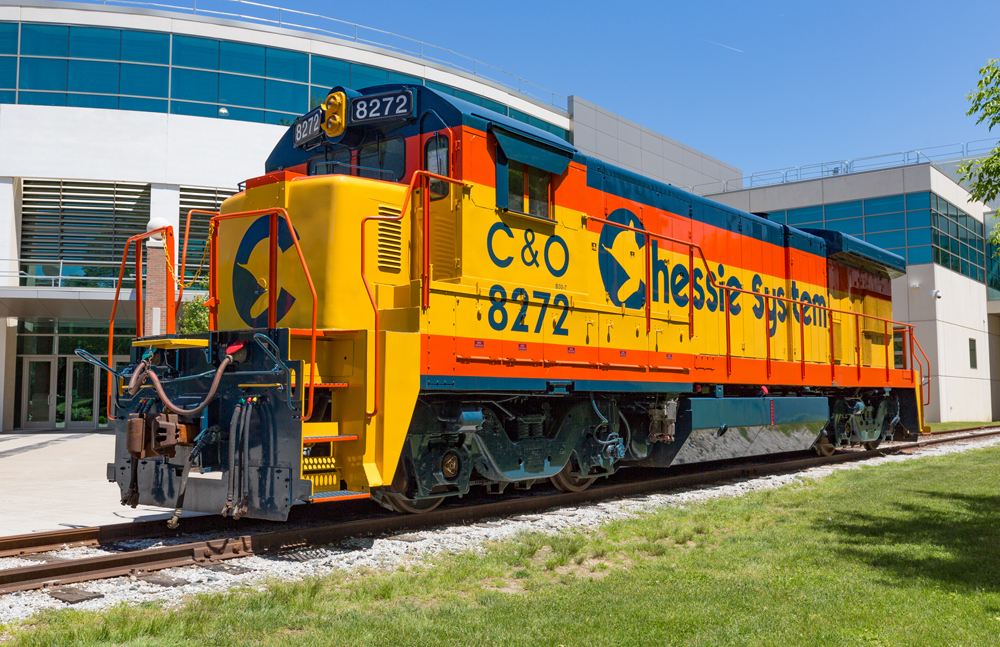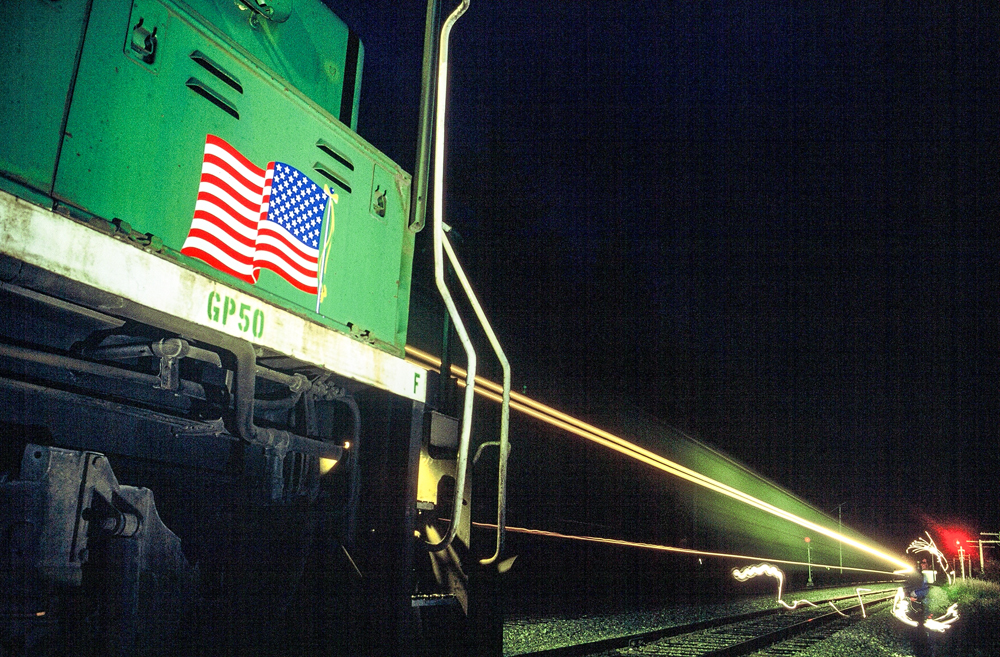The new “Taking of Pelham 1 2 3” was shot with unprecedented cooperation from MTA NYC Transit, which opened up its stations and tunnels to the filmmakers. (Director Tony Scott admits that he’d never previously set foot in the New York underground transit system.) However, to better film scenes without the restrictions of the subway’s tight tunnels, a great deal of the interior subway scenes were shot in the Kaufman-Astoria Studio complex in nearby Astoria, Queens, to take advantage of the controlled setting and mechanisms to simulate limited train movements. A set for the rail command center was built in the studio, and several subway car scenes were filmed there as well, though cleverly disguised and seamlessly blended with the location footage.
Of course, in the back of any rail enthusiast’s mind when watching a movie about trains is the question “could it really happen this way?” Like the 1974 version, the new “Pelham” has a number of safety, factual, and continuity errors apparent to frequent subway riders and fans.
Although the movie team used actual New York subway tunnels for filming, the subway car interior used for filming was a 10-foot-wide car (the R-143/160 model), rather than the 8-foot, 9-inch wide car (an R-142) that the passengers on New York’s Lexington Avenue line (where the movie takes place) would have been riding in. The reason for the difference in car widths is that different subway lines were built to different clearances, which were merged into one overall system in 1940 when New York City acquired the IRT in a bankruptcy proceeding, and subsequently the BMT. The Lexington Avenue line (Manhattan’s only East Side subway route and part of the city’s original subway that opened in 1904) is an older line that requires narrower cars. In one scene, an untrained and not qualified train dispatcher operates the subway from the opposite side of the operator’s cab. In another scene, he’s riding inside an R-142 subway car, but the exterior is an older R-62 subway car. The R-62 was shot on the Flushing line elevated near Woodside, Queens, and not in a tunnel.
As with the 1974 film, today’s filmmakers made extensive use of the New York Transit Museum’s decommissioned 1936 IND station and tunnels, yet various other subway stations and tunnels appear on film with different names. Moviemakers transformed the No. 7 line’s Grand Central subway station into the Lexington Avenue line’s 96th Street station, and later in the story send a car with the hostages to Coney Island, and there is no physical connection between the lines the way the movie unfolds. A fictional and unfinished “Roosevelt spur” beneath Grand Central plays an important role in the movie’s storytelling.
Some key elements of train operation in the movie are also fictitious. Speed timing signals cannot be turned to green from the command center, as the movie suggests, and track power knife switch boxes do not exist on the right-of-way. In one scene, a train dispatcher operates a subway train from the opposite side of the cab, with no prior training to operate that type of subway car. In another scene involving a runaway train, the system’s real speed timing signals would have prevented such an incident. In an emergency such as the hostage takeover scene, passengers would not walk on a roadbed with live third rail, but rather on an elevated ledge on the tunnel wall for safety. One character crosses live tracks on the Manhattan Bridge using an optical illusion blue screen effect. And while the movie sends a single individual R-142 subway car on a runaway journey through New York City, in reality subway cars can only be separated in an overhaul shop from their semi-permanently attached trainsets, and not on the road as shown.
Because “Pelham” was re-spun, it provided an opportunity to introduce new ideas into the film genre. The hostage-taker surfs the Web looking for the dispatcher’s alleged bribe-taking and finds it. In reality, this is not possible underground as no strong Internet connection exists. However, the most critical new idea is the use of a webcam on a laptop. Images of the car interior during the hostage situation were sent to a passenger’s girlfriend’s home computer and then were routed to the police and used to identify the perpetrators.
The film retains and possibly exceeds the grit and feel of the 1974 version, although the reinvented version is different enough that you won’t be seeing the original a second time. Do the four gunmen escape with the money? Check out “The Taking of Pelham 1 2 3” in theatres now.
JOSEPH M. CALISI is a transportation photojournalist and historian.





